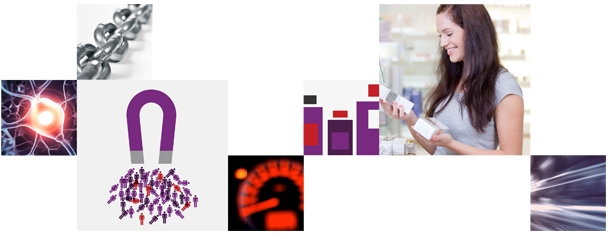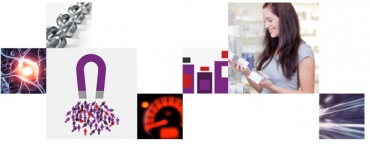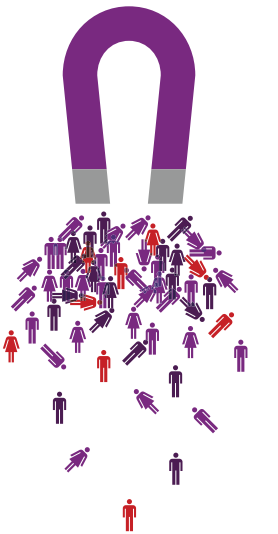
 The world has many popular brands but only a select few have the magnetic power of irresistibility.
The world has many popular brands but only a select few have the magnetic power of irresistibility.
Now a new study from TNS has revealed what it takes to become an irresistible brand – and why it is so important to do so.
Irresistible brands have a power that goes beyond being recognisable and popular. When faced with a choice in their category, consumers are magnetically drawn to them, unable and unwilling to see any alternative. The power these brands exert today makes their success appear almost magical, but the fact is that they have very specific characteristics that make them irresistible brands. They have been deliberately designed and carefully managed over time to exert such a powerful pull.
Brands become irresistible by appealing to both of the systems that govern human behaviour: the fast, frugal ‘System 1’ brain that drives much of our daily decision-making through emotion and intuition; and the slow, resource-intensive ‘System 2’ brain that operates consciously to rationalise our System 1 choices. In this way, they are able to align with consumers’ deeper priorities and motivations whilst generating an immediate, often automatic response whenever a choice is made.
Analysis of NeedScope’s database of over 1,000 brands proves just how important irresistibility can be. Brands with a high Irresistibility Quotient or IQ show significantly higher usage than those with lower scores. A brand with an IQ of 80 for a particular needstate delivers twice the share in that needstate of a brand with an IQ of 50.
Like a powerful magnet, irresistible brands pull large numbers of consumers towards them, but there will be some for whom they do not exert the same level of attraction. For irresistible brands this is an active choice; they have identified the needs that they appeal to and they have built their brand propositions and business models single-mindedly around them.

These brands differentiate like they mean it – and they know that the benefits of irresistibility far outweigh the risk of turning some consumers away.
However, irresistible brands are rare. Only 16% of those in the analysis achieved an IQ of 70 or higher. All of these brands shared 8 key characteristics, 8 irresistibility apps that drive their magnetic attraction. For marketers, these apps form the playbook for achieving true domination within a need-state.
Key action points for marketers:
App 1: Know-how
Is your brand a credible expert for its need-state?
Examples of Know-how: Bang & Olufsen, Dyson, Nike
App 2: Momentum
Can you stay ahead of the game?
Examples of Momentum: Coca-Cola, Samsung
App 3: Differentiation
Do you have the courage to stand for something?
Examples of Differentiation: Dove
App 4: Emotion
Do you know what your emotive meaning is?
Examples of Emotion: Stella Artois, Red Bull
App 5: Symbolism
Do you have your own emotive language?
Examples of Symbolism: Chanel
App 6: Nexus
Do the different elements of your brand add up?
Examples of Nexus: Simple
App 7: Alignment
Is your brand consistent across touchpoints?
Examples of Alignment: Audi
App 8: Unity
Could your brand remain recognisable across products and categories?
Examples of Unity: Johnnie Walker
Can you afford to be resistible?
Aspiring to irresistibility makes many demandsof marketers – but the risks involved in leaving irresistibility to others are far greater. A glance further down the NeedScope IQ index shows what happens to those failing to stake out clear, emotively coherent positions that can make them an inevitable choice for consumers. For brands with an IQ under 50, market share starts to erode quickly; those with an IQ of 20 or below are less than half as likely to be chosen than the average for their category. When such brands come up against a rival with more of the characteristics of irresistibility, there is usually only one result.
Many try to address such threats by copying the spending or energetic activity of successful brands, but without the discipline and coherence of true irresistibility, much of this effort could be wasted. Irresistible brands don’t have to be big – although they inevitably grow – and they don’t have to be expensive – although irresistibility allows brands to charge a premium over their competitors. What characterises them above all is their understanding of the complex, emotive position they occupy within consumers’ brains and the determined courage with which they use the 8 apps of irresistibility to become and stay that way. Those apps provide a powerful framework for any brand with the ambition of becoming irresistible. And that is an ambition that every brand should have.
Read the full report HERE
Source:TNS
